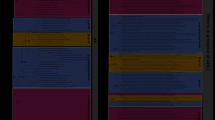Abstract
WD40-repeat proteins have four to eight repeat units, which have Gly–His (GH) and Trp–Asp (WD) at both termini and fold into a beta-propeller. In particular, the WD40-repeat protein of Clonorchis sinensis (CsWD1) has seven WD-repeat units and is expressed stage-specifically in metacercariae. By yeast two-hybrid screening, putative interacting protein cDNAs were cloned from a C. sinensis metacercaria cDNA library and purified further by higher stringency screening and lacZ colony-lift assay. After assessing their nucleotide and polypeptide sequences, 21 putative partner protein cDNAs were selected and assembled into 14 clones. Using YRG2 strain yeast, 12 putative partner protein clones were confirmed to interact with CsWD1 protein. These 12 proteins were grouped into functional categories, i.e., signal proteins, transporters, proteases, and muscle proteins. These results suggest that CsWD1 protein is associated with intracellular protein translocation and cell cycle control in C. sinensis metacercaria.


Similar content being viewed by others
References
Bauer MF, Hofmann S, Neupert W, Brunner M (2000) Protein translocation into mitochondria: the role of TIM complexes. Trends Cell Biol 10:25–31
Bjorn SP, Soltyk A, Beggs JD, Friesen JD (1989) PRP4 (RNA4) from Saccharomyces cerevisiae: its gene product is associated with the U4/U6 small nuclear ribonucleoprotein particle. Mol Cell Biol 9:3698–3709
Cheng Z, Liu Y, Wang C, Parker R, Song H (2004) Crystal structure of Ski8p, a WD-repeat protein with dual roles in mRNA metabolism and meiotic recombination. Protein Sci 13:2673–2684
Cho PY, Lee MJ, Kim TI, Kang SY, Hong SJ (2006) Expressed sequence tag analysis of adult Clonorchis sinensis, the Chinese liver fluke. Parasitol Res 99:602–608
Grove M, Demyanenko G, Echarri A, Zipfel PA, Quiroz ME, Rodriguiz RH, Playford M, Martensen SA, Robinson MR, Wetsel WC, Maness PE, Pendergast AM (2004) ABI2-deficient mice exhibit defective cell migration, aberrant dendritic spine morphogenesis and deficits in learning and memory. Mol Cell Biol 24:10905–10922
Hatton LS, Eloranta JJ, Figueiredo LM, Takagaki Y, Manley JL, O’Hare K (2000) The Drosophila homologue of the 64 kDa subunit of cleavage stimulation factor interacts with the 77 kDa subunit encoded by the suppressor of forked gene. Nucleic Acids Res 28:520–526
Holzl H, Kapelari B, Kellermann J, Seemuller E, Sumegi M, Udvardy A, Medalia O, Sperling J, Muller SA, Engel A, Baumeister W (2000) The regulatory complex of Drosophila melanogaster 26S proteasome: Subunit composition and localization of a deubiquitylating enzyme. J Cell Biol 150:119–129
Hong SJ, Seong KY, Sohn WM, Song KY (2000) Molecular cloning and immunological characterization of phosphoglycerate kinase from Clonorchis sinensis. Mol Biochem Parasitol 108:207–216
Lamartine J, Seri M, Cinti R, Heitzmann F, Crearen M, Radomski N, Jost E, Lenoir GH, Romeo G, Sylla BS (1997) Molecular cloning and mapping of a human cDNA (PA2G4) that encodes a protein highly homologous to the mouse cell cycle protein p38-2G4. Cytogenet Cell Genet 78:31–35
Li D, Roberts R (2001) WD-repeat proteins: structure characteristics, biological function, and their involvement in human diseases. Cell Mol Life Sci 58:2085–2097
Lin B, White JT, Utleg AG, Wang S, Ferguson C, True LD, Vessella R, Hood L, Nelson PS (2003) Isolation and characterization of human and mouse WDR19, a novel WD-repeat protein exhibiting androgen-regulated expression in prostate epithelium. Genomics 82:331–342
Lin TY, Huang CH, Chou WG, Juang JL (2004) Abi enhance Abl-mediated CDC2 phosphorylation and inactivation. J Biomed Sci 11:902–910
Lundgren J, Masson P, Realini CA, Young P (2003) Use of RNA interference and complementation to study the function of the Drosphila and human 26S proteasome subunit S13. Mol Cell Biol 23:5320–5330
Madrona AY, Wilson DK (2004) The structure of Ski8p, a protein regulating mRNA degradation: implications for WD protein structure. Protein Sci 13:1557–1565
Meier S, Neupert W, Herrmann JM (2005) Proline residues of transmembrane domains determine the sorting of inner membrane proteins in mitochondria. J Cell Biol 170:881–888
Nabhan JF, Hamdan FF, Riberio P (2001) A Schistosoma mansoni Pad1 homologue stabilizes c-Jun. Mol Biochem Parasitol 116:209–218
Osman A (2004) Yeast two-hybrid assay for studying protein–protein interactions. Methods Mol Biol 270:403–422
Paschen SA, Neupert W (2001) Protein import into mitochondria. IUBMB Life 52:101–112
Pryer NK, Salama NR, Schekman R, Kaiser CA (1993) Cytosolic Sec13p complex is required for vesicle formation from the endoplasmic reticulum in vitro. J Cell Biol 120:865–875
Smith TF, Gaitatzes C, Saxena K, Neer E (1999) The WD-repeat: a common architecture for diverse functions. Trends Biochem Sci 24:181–185
Steimle PA, Naismith T, Licate L, Egelhoff TT (2001) WD repeat domains target dictyostelium myosin heavy chain kinases by binding directly to myosin filaments. J Biol Chem 276:6853–6860
Truscott KN, Pfanner N, Voos W (2001) Transport of proteins into mitochondria. Rev Physiol Biochem Pharmacol 143:81–136
Venter JC et al (2001) The sequence of the human genome. Science 291:1304–1351
Vergnolle MA, Baud C, Golovanov AP, Alcock F, Luciano P, Lian LY, Tokatlidis K (2005) Distinct domains of small Tims involved in subunit interaction and substrate recognition. J Mol Biol 351:839–849
Acknowledgment
This work was supported by the Korea Science and Engineering Foundation (KOSEF) grant funded by the Korea government (MOST) (R01-2002-000-00261-0).
Author information
Authors and Affiliations
Corresponding author
Rights and permissions
About this article
Cite this article
Kim, T.I., Cho, P.Y., Li, S. et al. Partner proteins that interact with Clonorchis sinensis WD40-repeat protein. Parasitol Res 101, 1233–1238 (2007). https://doi.org/10.1007/s00436-007-0625-5
Received:
Accepted:
Published:
Issue Date:
DOI: https://doi.org/10.1007/s00436-007-0625-5




